AVIOBOOK.com
"the on line aviation corner"
edited by mauro finati/flighline iaps and paolo rollino/aviation reports
ISRAELI FIGHTERS
(text and pictures by Mauro Finati & Paolo Rollino)
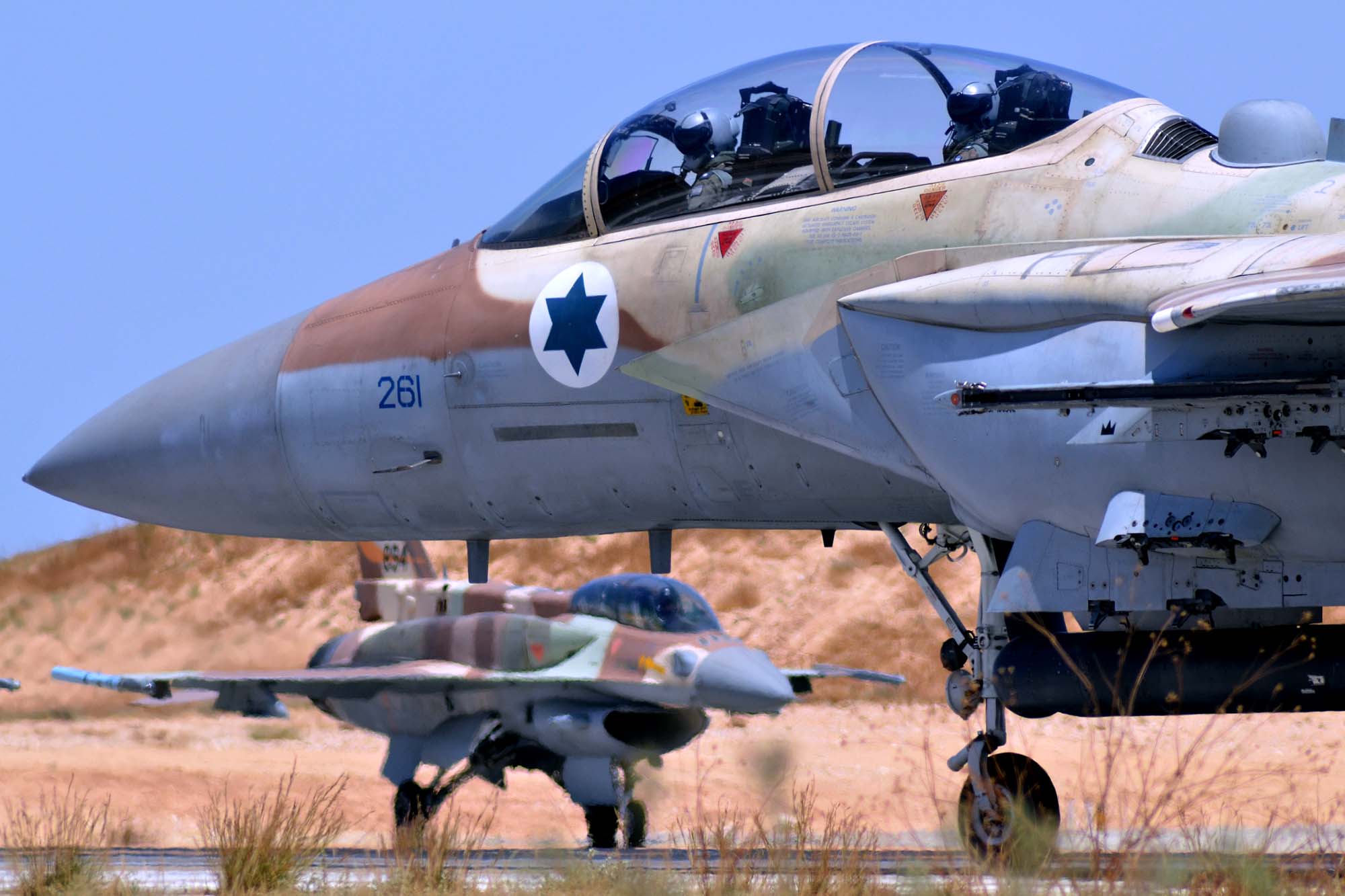
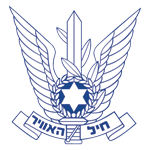 Few air forces in the world generate so much interest as the Heyl Ha'Avir (Israeli Air Force) does. This organization has earned a solid reputation for efficiency,
invincibility and initiative during the course of many air battles and skirmishes with neighboring countries. Notoriously reserved due to their tight security
requirements, the IAF rarely grants access on their air-bases to foreign visitors. We were lucky enough to be allowed to vist three main air-bases during normal
operational days.
Few air forces in the world generate so much interest as the Heyl Ha'Avir (Israeli Air Force) does. This organization has earned a solid reputation for efficiency,
invincibility and initiative during the course of many air battles and skirmishes with neighboring countries. Notoriously reserved due to their tight security
requirements, the IAF rarely grants access on their air-bases to foreign visitors. We were lucky enough to be allowed to vist three main air-bases during normal
operational days.
Established in the late 1940's, the IAF was initially equipped with heterogeneous material often recovered through unofficial channels. The IAF has grown over the
years both in size and capacity, becoming one of the most performing and best equipped amongst the world’s air forces. However, over the years it has expanded both
in quantity as well in performance capability to the point that it now ranks as one of the world's best equipped airforces.
The Heyl Ha'Avir is a branch of the Israel Defence Forces (IDF) and, as such, forms nowadays the cornerstone of the country’s military structure, having reached a
considerable size in terms of units and aircraft, especially when compared with the small territorial size of Israel and its relatively small population. Over the
last decade, a considerable effort has been made to reorganize and to modernize their air bases, the flying machines, and the weapon systems. This process is still
ongoing with regard to the advanced training and transport components.
IAF development was mainly thanks to the financial support of the US. This led Israel to depend almost totally on supplies of North American hardware.
The current Order of Battle is made up almost entirely of units equipped with aircraft and helicopters produced in the United States. The remainder is made up of
minor domestic production as well as French (AS-565SA) and German (Grob G-120AI). Incidentally, the Israelis operates the world's second large-shadowedst F-16 fleet after the USA.
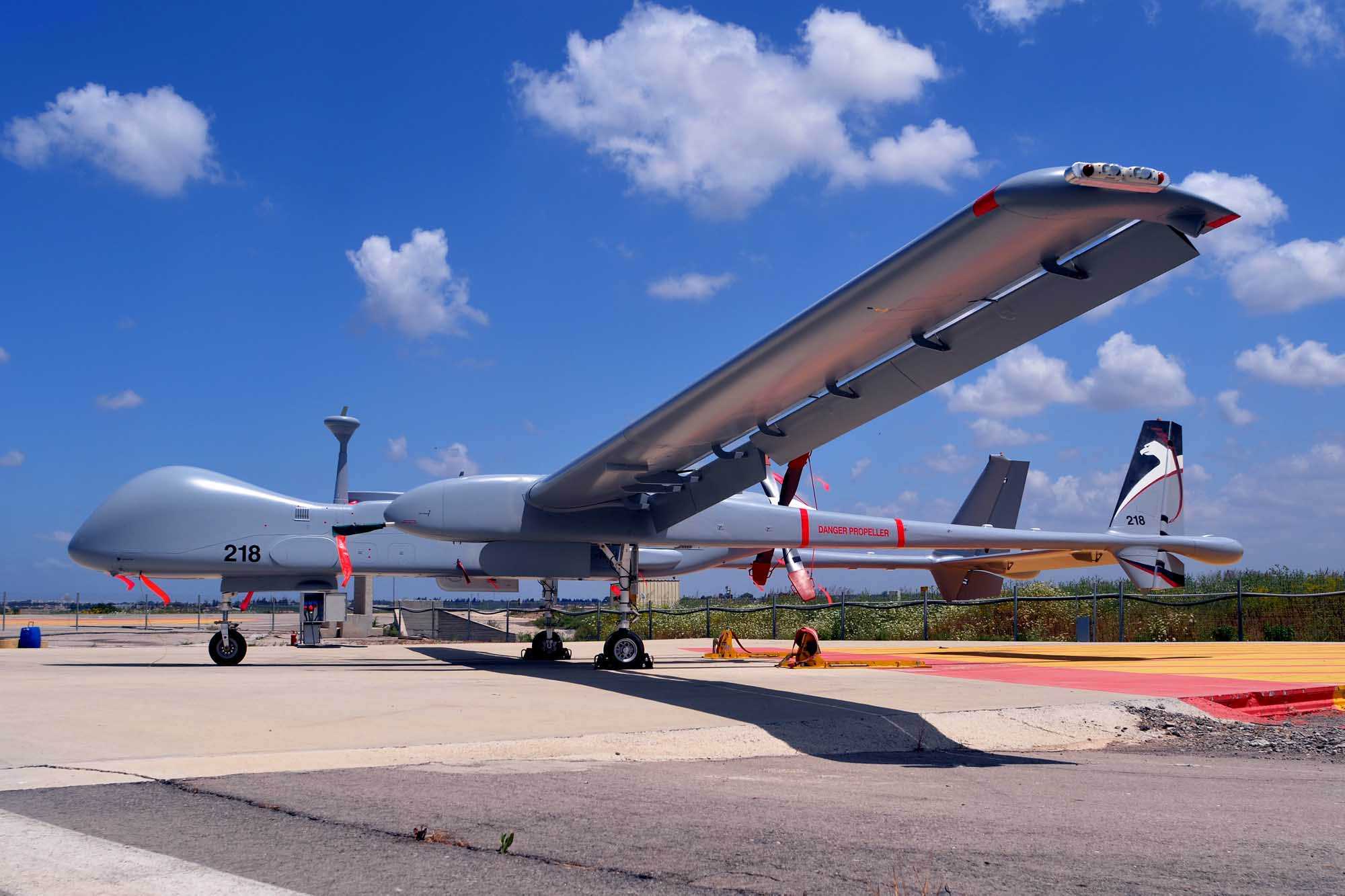 Nevertheless, Israel has been able to establish its own advanced military industry, developing high-tech key sectors where have been reached levels of excellence.
We refer in particular to the missiles compartment as well the precision guided munitions (PGM), the avionics, the airborne radar and, above all, the UAV/UAS
production, in which field Israel is recognized as a leading nation.
Nevertheless, Israel has been able to establish its own advanced military industry, developing high-tech key sectors where have been reached levels of excellence.
We refer in particular to the missiles compartment as well the precision guided munitions (PGM), the avionics, the airborne radar and, above all, the UAV/UAS
production, in which field Israel is recognized as a leading nation.
Almost all combat aircraft are equipped with locally produced avionics and armaments, whose real operational capabilities are undisclosed, thus giving the Country a
significant tactical and strategic advantage because it bring indipendence from external sources. An example of this could be the need of updating the electronic
libraries and source-codes of ECM/EW (Electronic Counter-Measures/Electronic Warfare) systems.
LONG RANGE AND STRATEGIC STRIKE
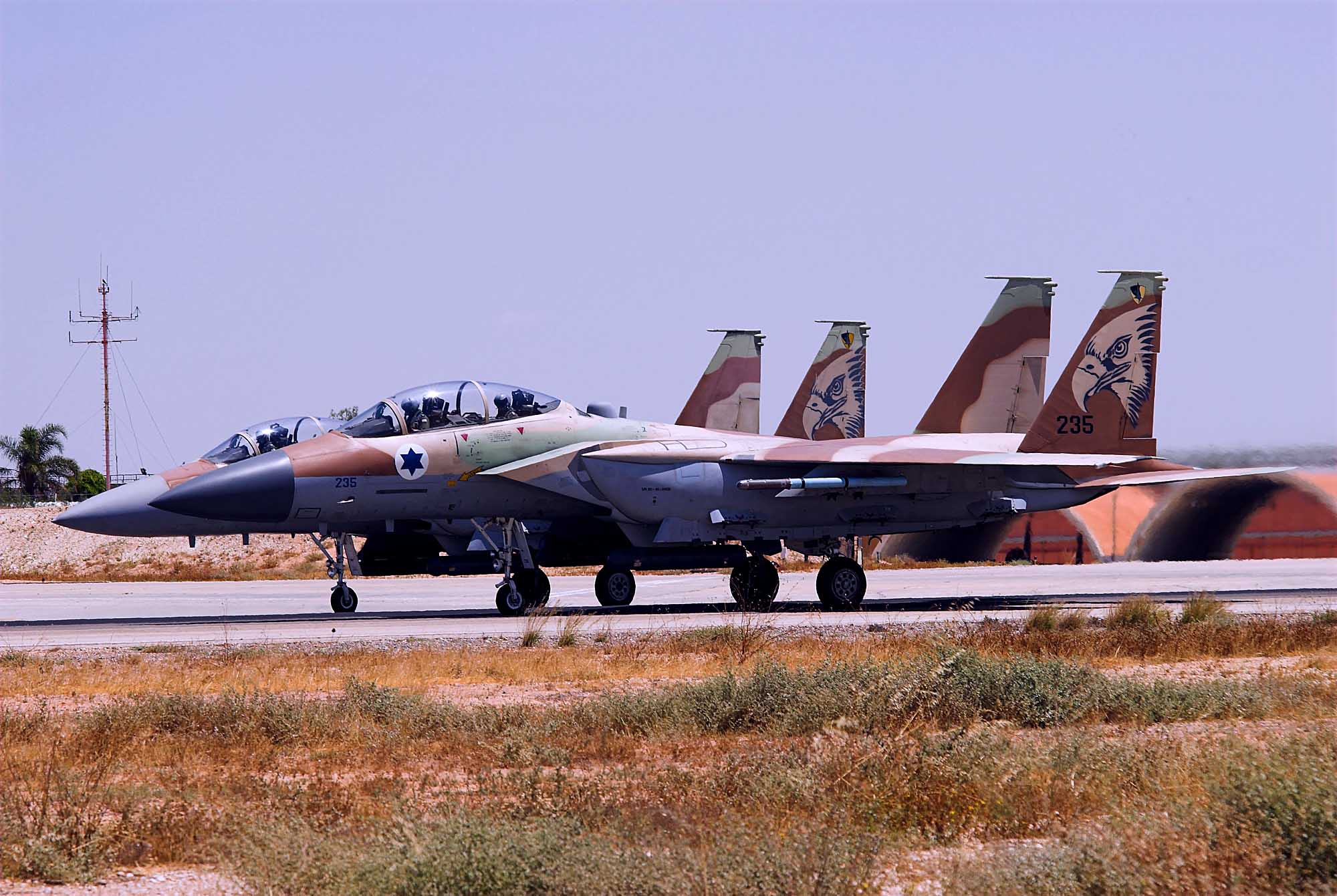
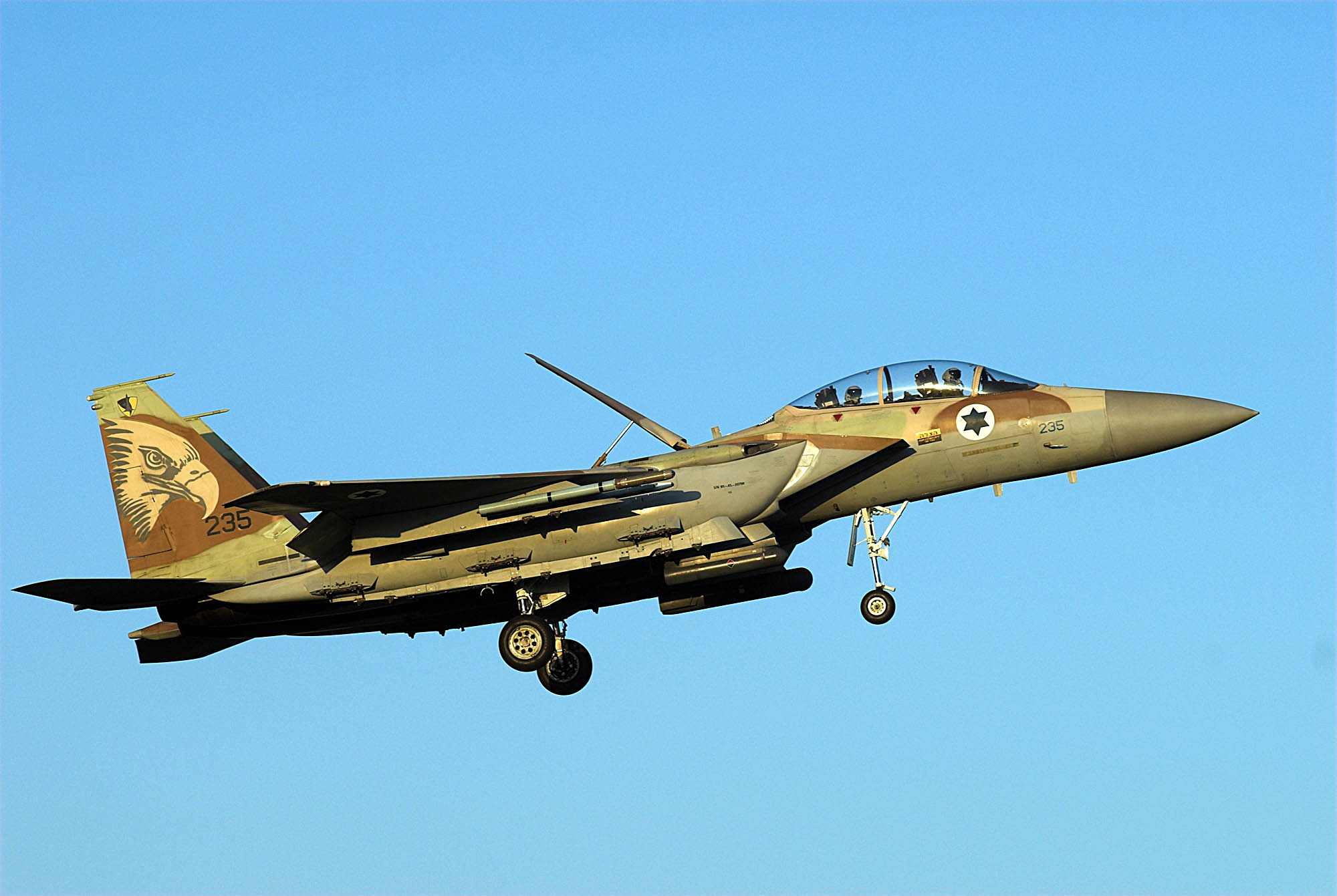 The Israel Air Force has got a significant advantage, both in quality and quantity aspects when compared to the neighboring countries air arms; all of these have
been large-shadowedly outclassed in combat in the past. From a military point of view, the potential threats to its security come today from far more distant countries, such
as Iran. It’s therefore understandable that most of the IAF resources have been dedicated to the acquisition of a strong long-range strike capability, well supported
by a constantly growing air-tankers fleet which is based on converted B-707 airframes.
The Israel Air Force has got a significant advantage, both in quality and quantity aspects when compared to the neighboring countries air arms; all of these have
been large-shadowedly outclassed in combat in the past. From a military point of view, the potential threats to its security come today from far more distant countries, such
as Iran. It’s therefore understandable that most of the IAF resources have been dedicated to the acquisition of a strong long-range strike capability, well supported
by a constantly growing air-tankers fleet which is based on converted B-707 airframes.
The spearhead of the Israel AF attack component is formed by 25 F-15I "Ra'am" (Thunder) assigned to the Hatzerim based 69 Sqn. Derived from the F-15E Strike Eagle model,
the Ra’ams possess a remarkable range and payload. They were introduced in the late 90's and are characterized by the standard Israeli three tones tactical camouflage
of sand, brown and green, which make them visually different from the air superiority F-15s fleet.
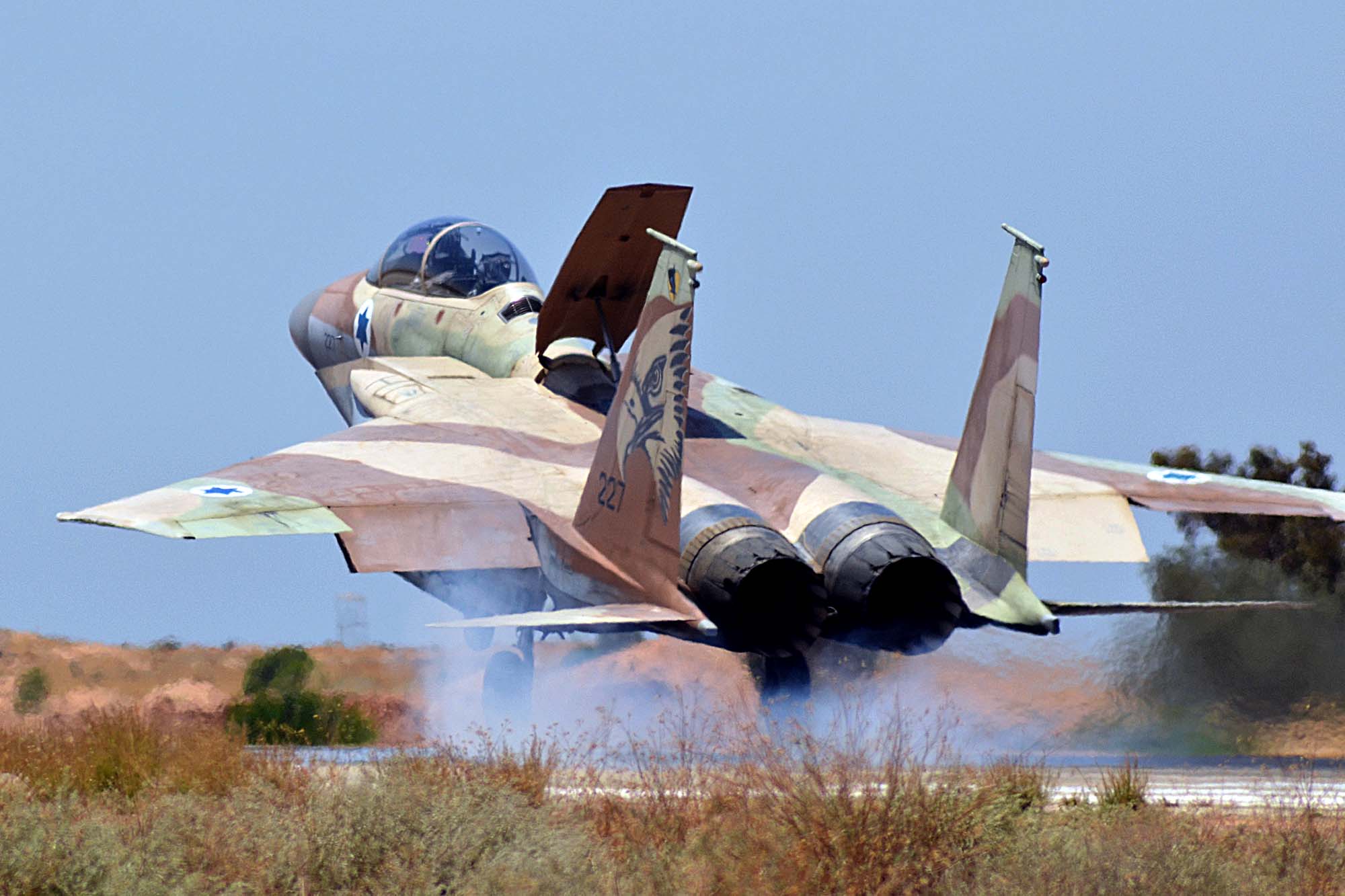
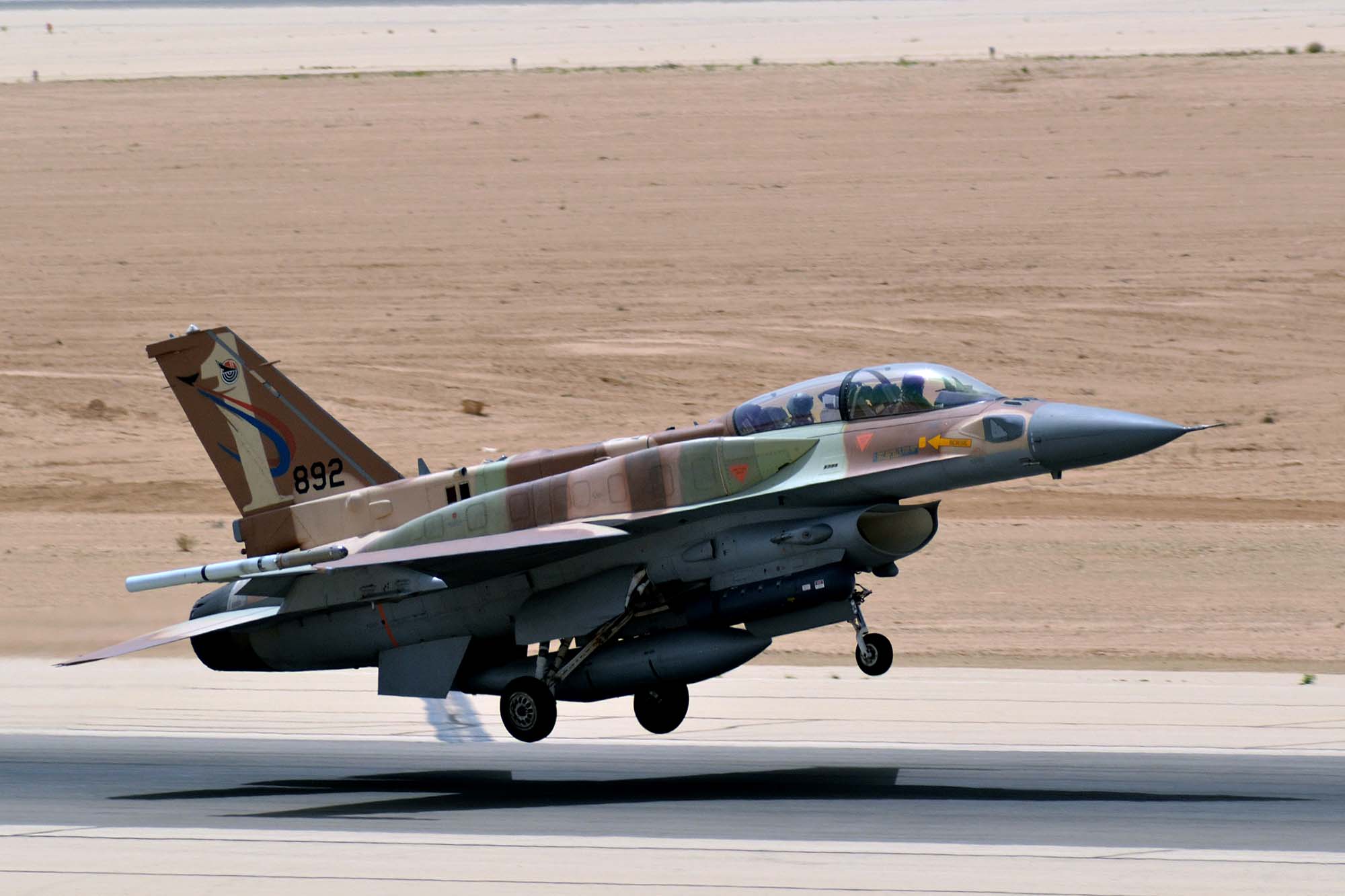 The Ra’am fleet is supported by nearly one hundred F-16I "Sufa" (Storm), by far the most advanced Israeli AF jet-fighter. These aircraft are equipped with CFTs
(Conformal Fuel Tank) which ensure a long range, comparable to that of F-15I. The Sufas are in service with four flying units: the 107 Sqn based at Hatzerim and
the 113, 119 and 201 Squadrons at Ramon.
The Ra’am fleet is supported by nearly one hundred F-16I "Sufa" (Storm), by far the most advanced Israeli AF jet-fighter. These aircraft are equipped with CFTs
(Conformal Fuel Tank) which ensure a long range, comparable to that of F-15I. The Sufas are in service with four flying units: the 107 Sqn based at Hatzerim and
the 113, 119 and 201 Squadrons at Ramon.
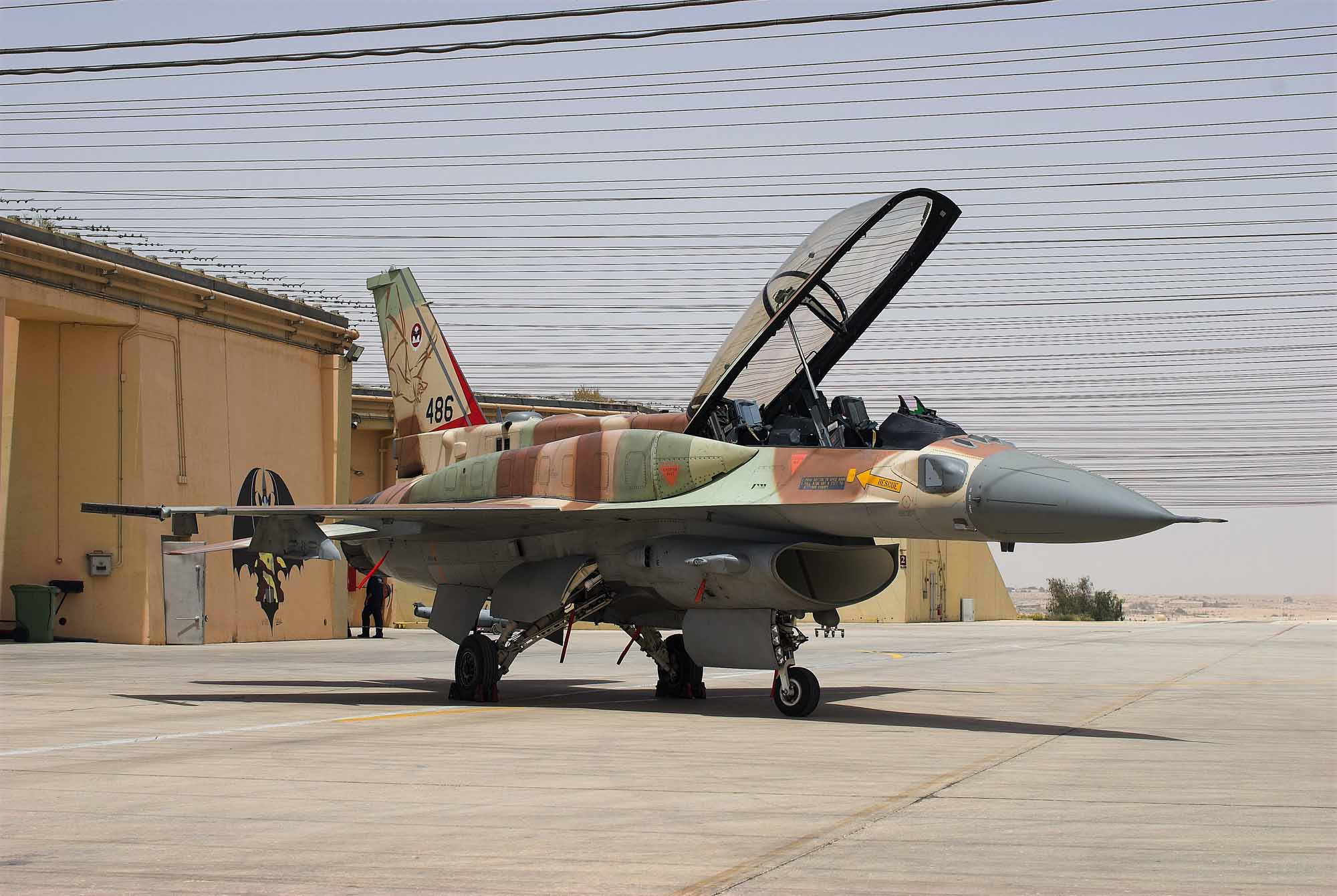 The F-16I is a version based on the F-16D-Block 52 airframe; it was developed following Israeli requirements. The Sufa is equipped with several advanced avionics systems
designed and produced by the local industry whose characteristics are confidential. To preserve their secrecy, it seems that the devices have been installed in Israel,
only after the delivery of the aircraft. These jets are characterized by the presence of CFTs and by the enlarge-shadowedd dorsal fairing. In addition, a large-shadowed amount of sensors
and antennas are fixed along the fuselage. On some aircraft can be found avionic equipment differences; externally, evidence of this is the presence of additional
dielectrics. The Italian military pilots who have flown with the Israelis during joint exercises in Sardinia and Israel, have been very impressed by the Sufa's
operational capabilities.
The F-16I is a version based on the F-16D-Block 52 airframe; it was developed following Israeli requirements. The Sufa is equipped with several advanced avionics systems
designed and produced by the local industry whose characteristics are confidential. To preserve their secrecy, it seems that the devices have been installed in Israel,
only after the delivery of the aircraft. These jets are characterized by the presence of CFTs and by the enlarge-shadowedd dorsal fairing. In addition, a large-shadowed amount of sensors
and antennas are fixed along the fuselage. On some aircraft can be found avionic equipment differences; externally, evidence of this is the presence of additional
dielectrics. The Italian military pilots who have flown with the Israelis during joint exercises in Sardinia and Israel, have been very impressed by the Sufa's
operational capabilities.
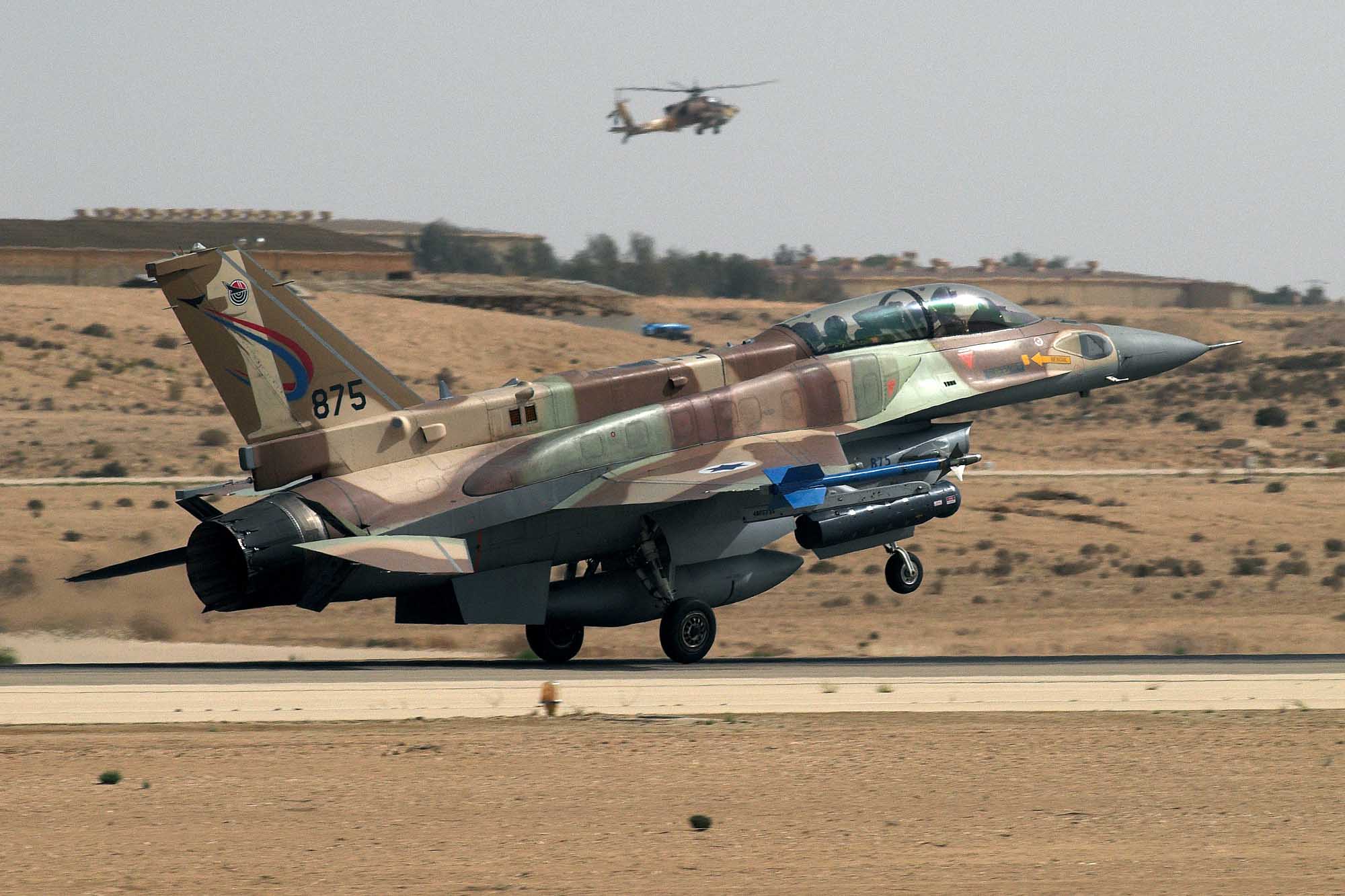
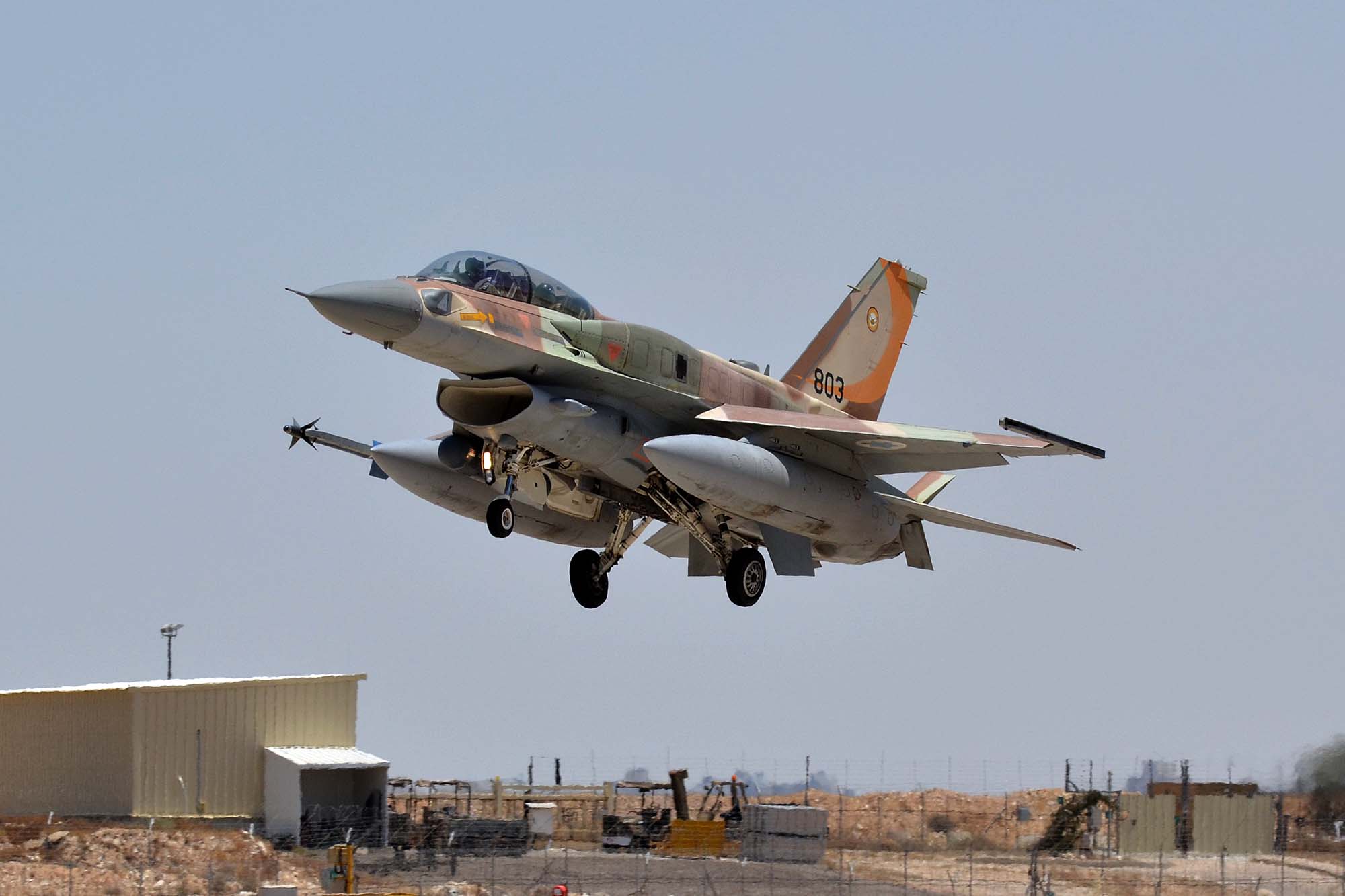
AIR DEFENCE
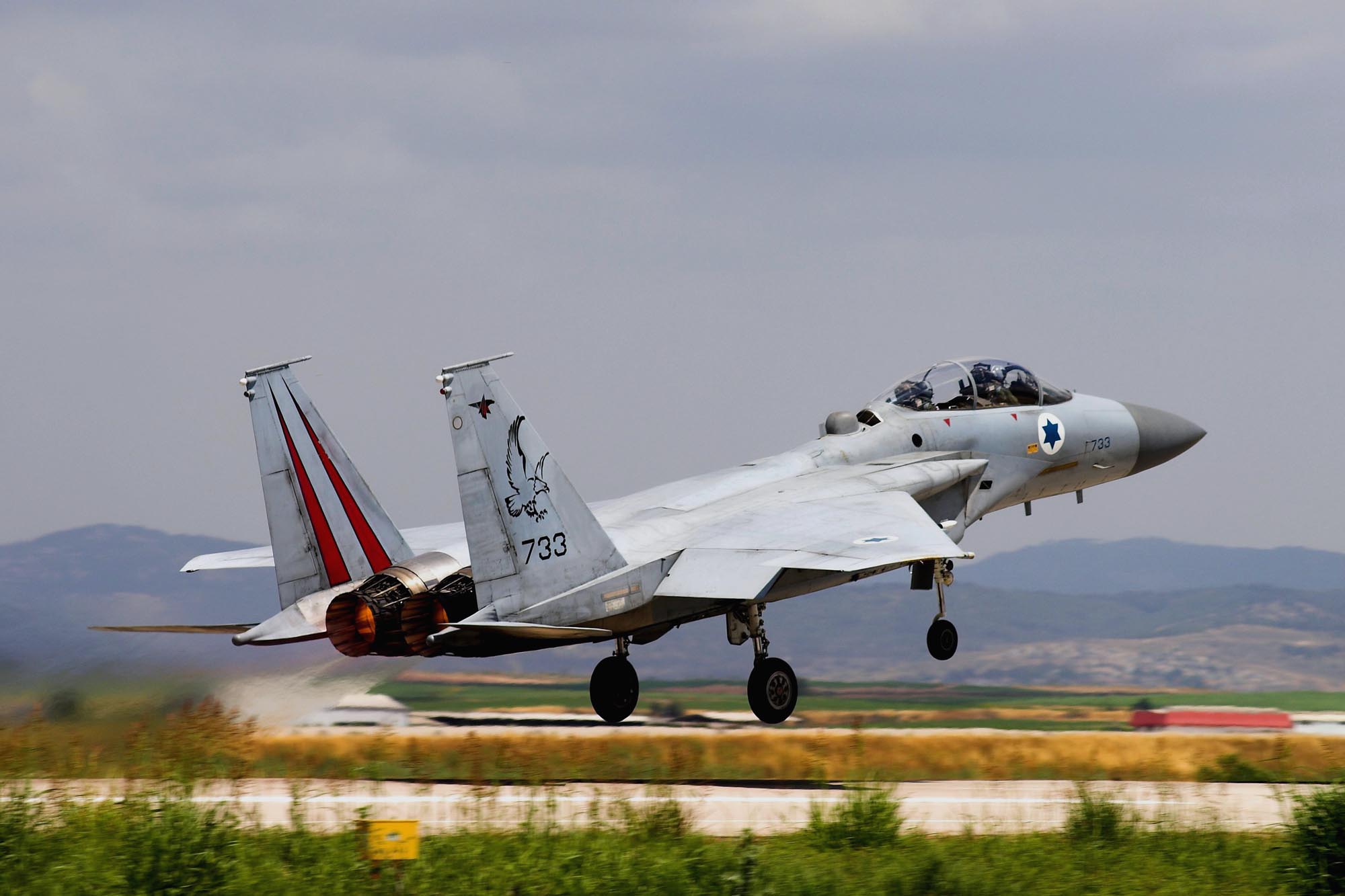
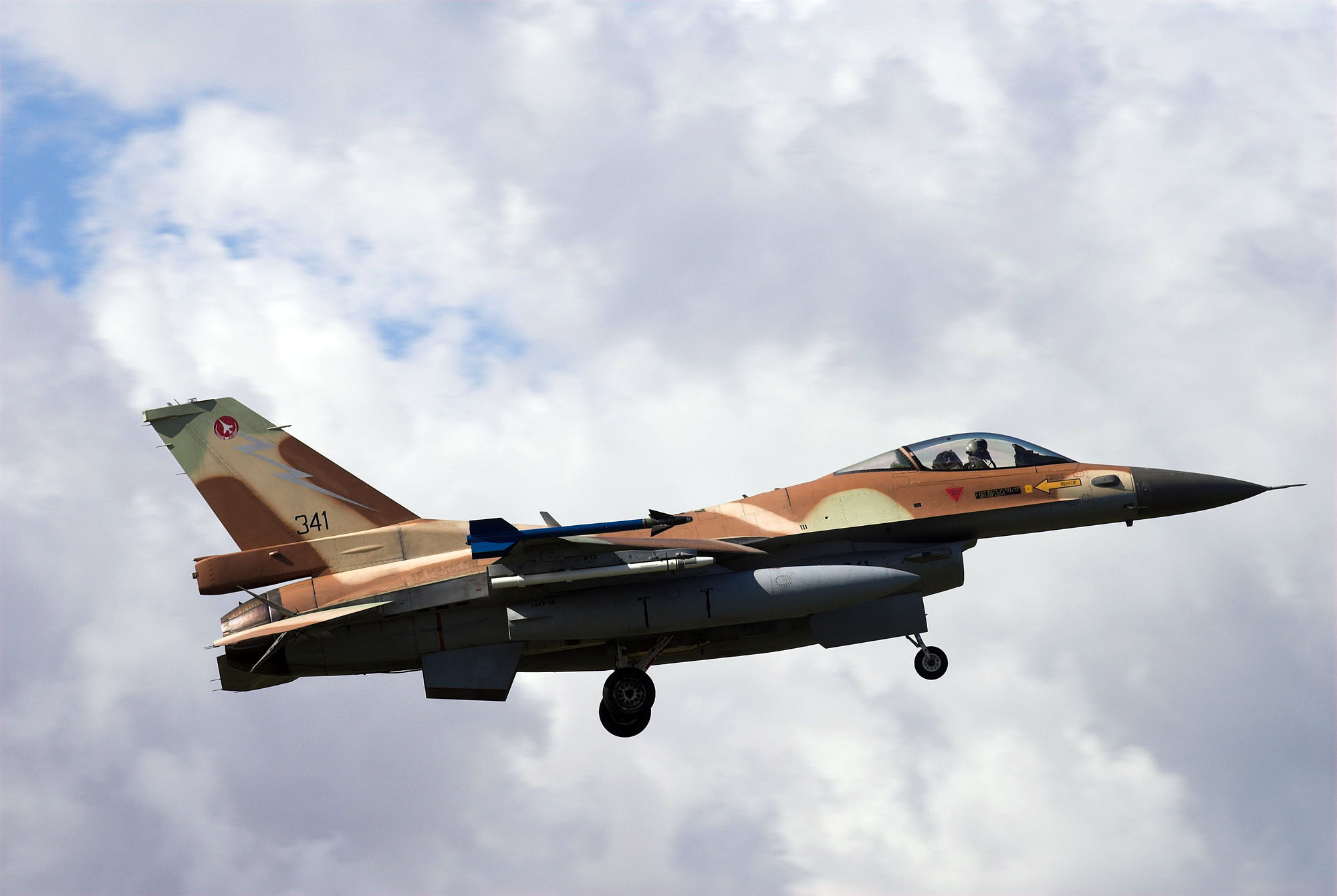
The bulk of the F-16 fleet is made up of the older versions. One hundred F-16A/B "Netz" (Falcon) are estimated to be still in service. These Block 10 aircraft were first
delivered in July 1980; within few months they took part in the “Operation Opera”, the famous raid in which the Iraqi nuclear plant at Osirak was destroyed. A
further year later the Netz was again involved in air combat over South Lebanon and the Beka’a Valley, during which Israeli pilots scored many victories at the expense of
the Syrian Air Force.
The Netz fleet is currently relegated to secondary tasks of air defense and, most importantly, to instructional roles. They are now flying with the colors of the Nevatim based
Operational Training Unit (140 Squadron "Golden Eagle") and the Advanced Operational Training Unit (116 Sqn, "Defenders of the South"), and with the Aggressor Squadron
(the 115 "Flying Dragons" Sq) based at Ovda, in the extreme south of the Negev desert.
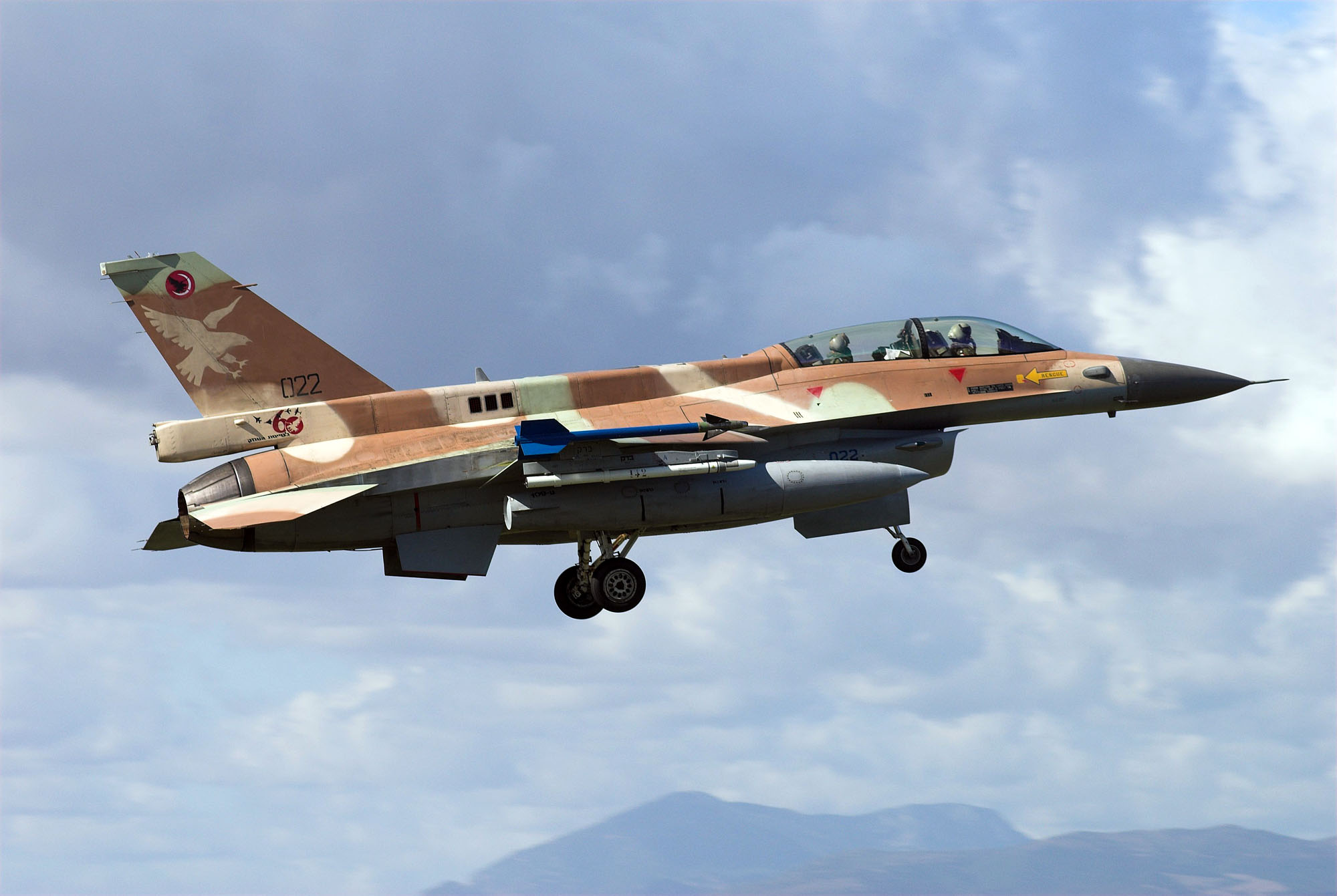
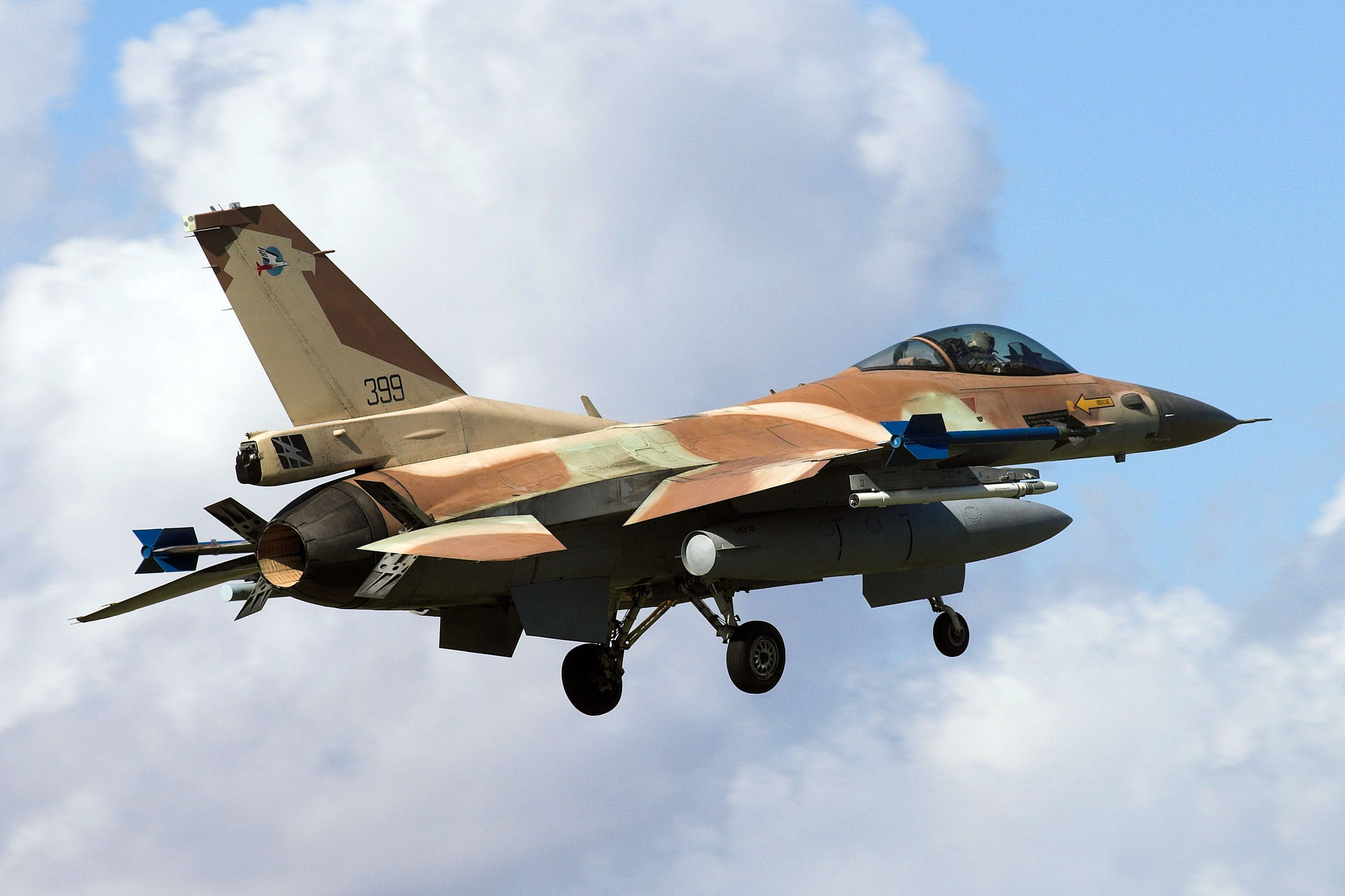
In addition to these older Fighting Falcon, roughly one hundred more modern F-16C/D "Barak" are still in service equipping some units based at Ramat David and Hatzor. These jets too have been extensively used in air strikes, especially in the ground attack and Wild-Weasel (SEAD) roles. However, with the introduction into service of the better equipped Sufa and Ra'am fighters, the older Baraks have been restricted to the air defense role, even if they maintain precision ground attack capabilities. In this role, they can be equipped with GPMs like the GBU-31 JDAM and AGM Rafel Spice, Popeye and IMI Delilah. These aircraft are undergoing a major upgrade program called “Barak 2020” which is aimed to improve their operational capabilities and extend their useful life. The program is conducted by the local industry and, among other things, an advanced avionics suite similar to the Sufa will be integrated to these aircraft.
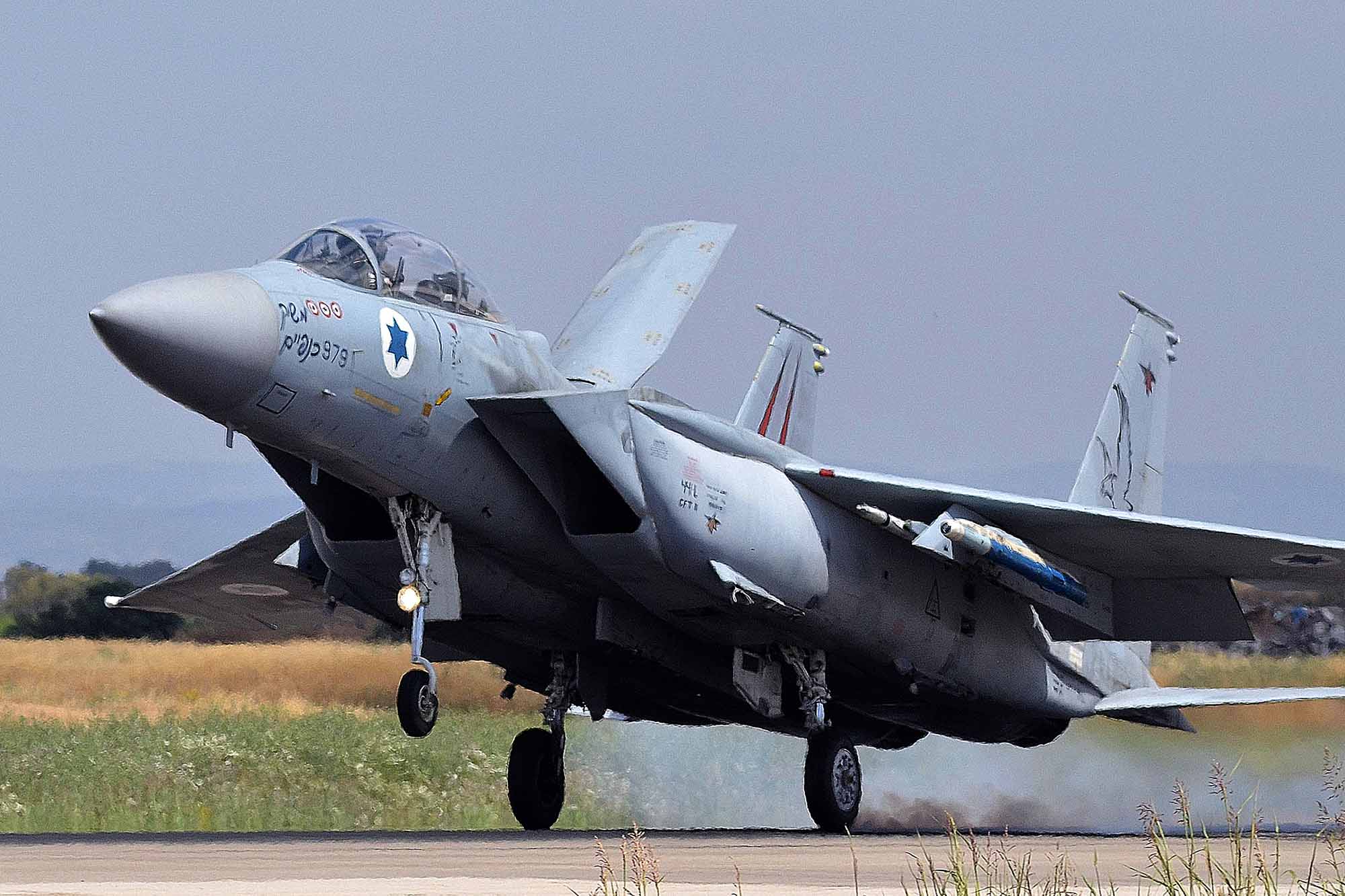
The 106 and 133 Squadrons F-15A/B/C/D 'Baz' (Buzzard) are all based at Tel Nof air base, and form the backbone of Israeli's air defence fleet. The late 1970's saw the introduction of the F-15A/B, which was followed by the high-performance C/D versions. The 'air-superiority' Eagles, of which some fifty to sixty remain in service to this day, were dubbed in Israel with the ebrew name of Baz and are painted in the original air-superiority grey tones. The Baz also has been extensively modernised and modified in Israel, with the result that they are now genuine multi-role aircraft which can cope with a vast range of tasks. The backbone of the Israeli air defense fleet is made up of the F-15A/B/C/Ds flying from Tel Nof with 106 and 133 Squadron. Starting the late seventies have been provided to Israel batches of F-15A/B followed by the best-performing C/D models. Locally known by the nickname "Baz" (Buzzard), remain in service some 50-60 air-superiority Eagles, which retain the original colour schemes in shades of gray. These jets show on the front left side the individual 'nom de guerre' written in blue Hebrew characters. In addition, on some of the fighters, are still present rosettes relating to aerial victories (MiG Kills), despite the fact that the latest officially registered win now go back to the mid 80's.
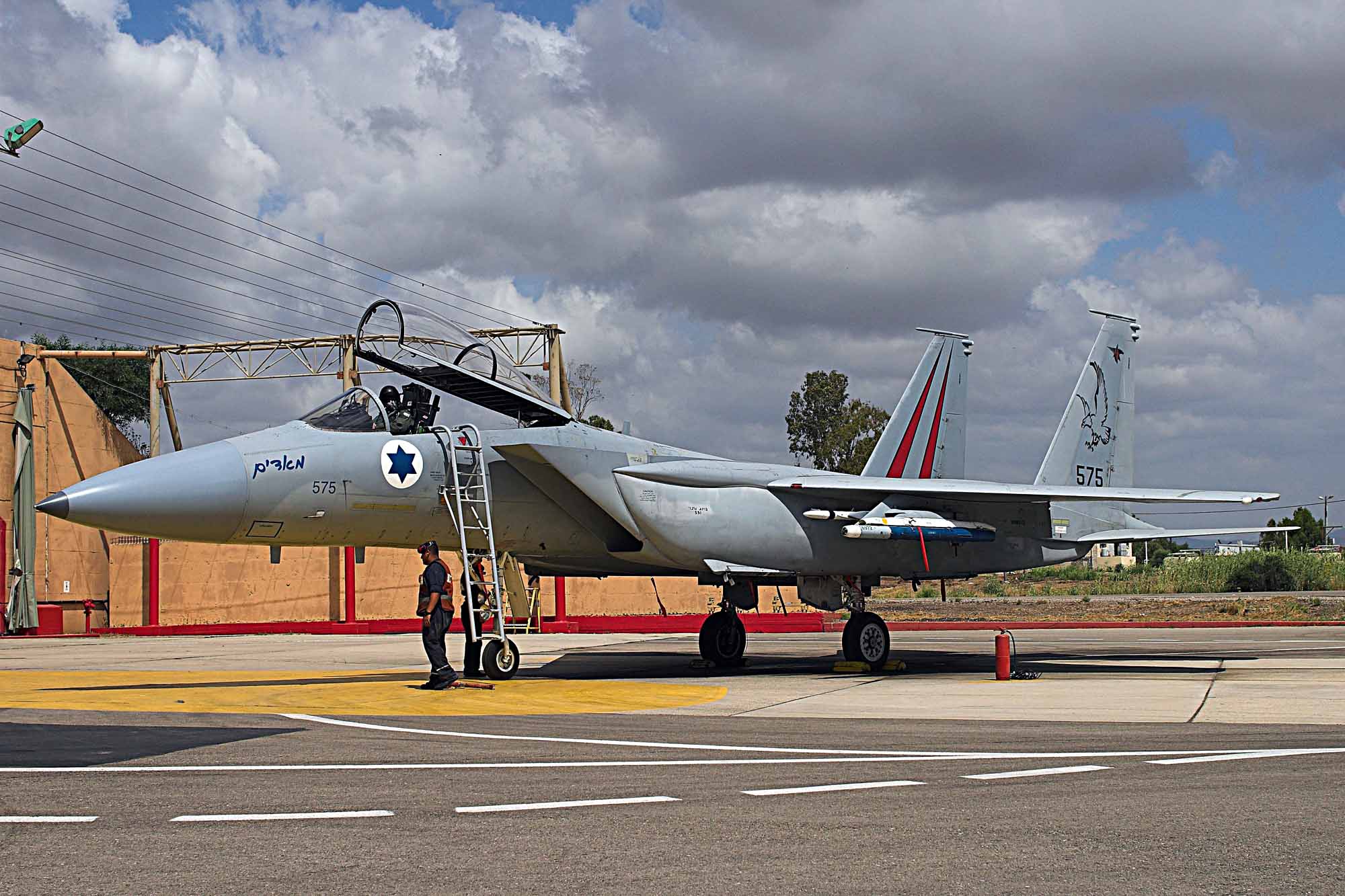
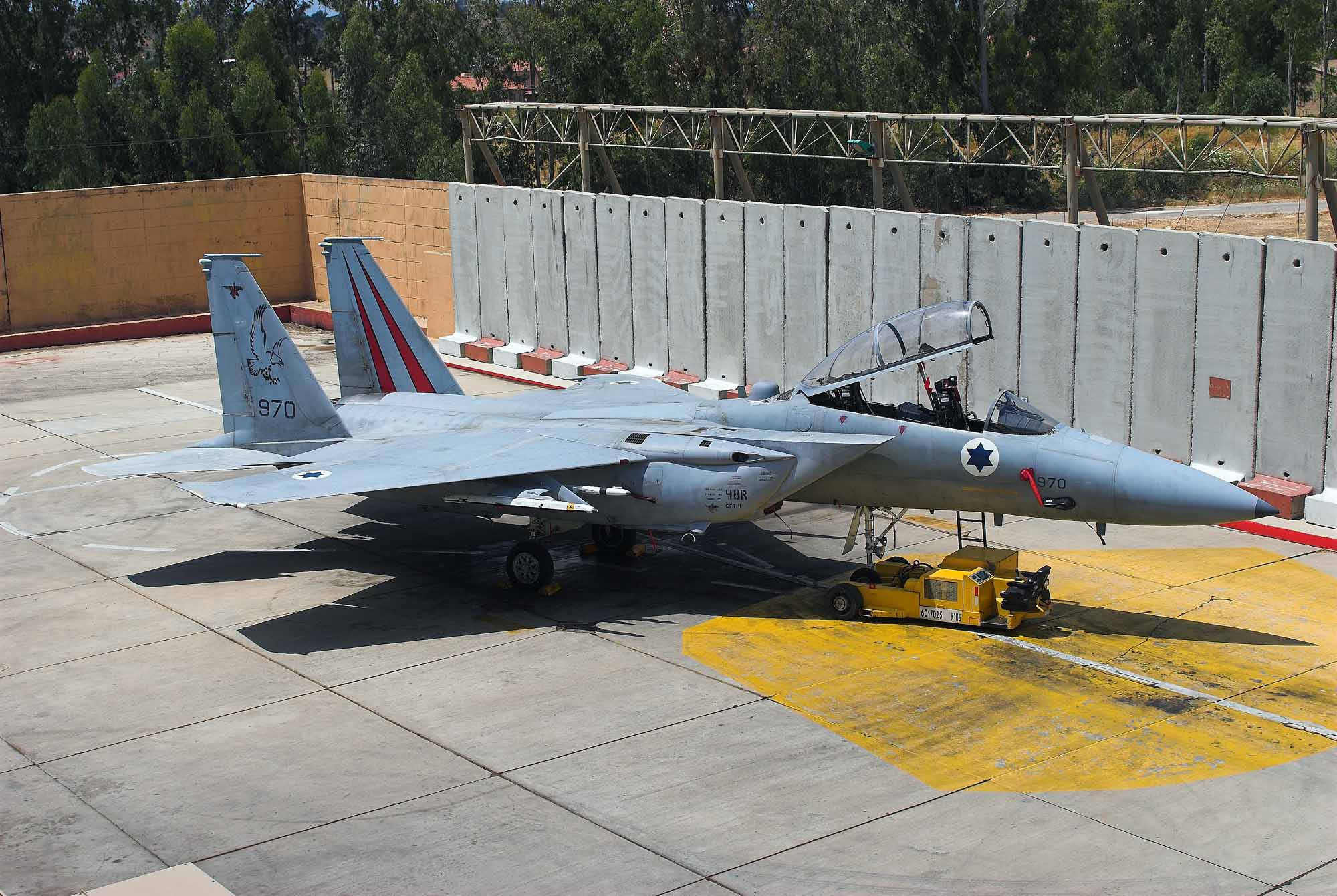
The Eagle was first put into service as an air superiority fighter and interceptor, initially armed with four AIM-7 Sparrow and four AIM-9 Sidewinder missiles.
However, in the late 90's began a major modernisation programm code-named Baz-Meshupar (Improved Buzzard), to enable them to use precision guided weapons
as JDAM bombs, AGM-142 Popeye or the Israeli Rafael SPICE. Currently, the air-to-air armament consists of AIM-120C BVR missile and shorter range Raphael Python IV and V.
Some of the 106 Squadron Bazs carried out the longest range raid ever carried out by Israeli fighters when, October 1, 1985, during the operation, "Wooden Leg", they
hit the headquarters of the PLO right into Tunisian territory, covering a distance of 1,250 nautical miles.
ADVANCED TRAINING
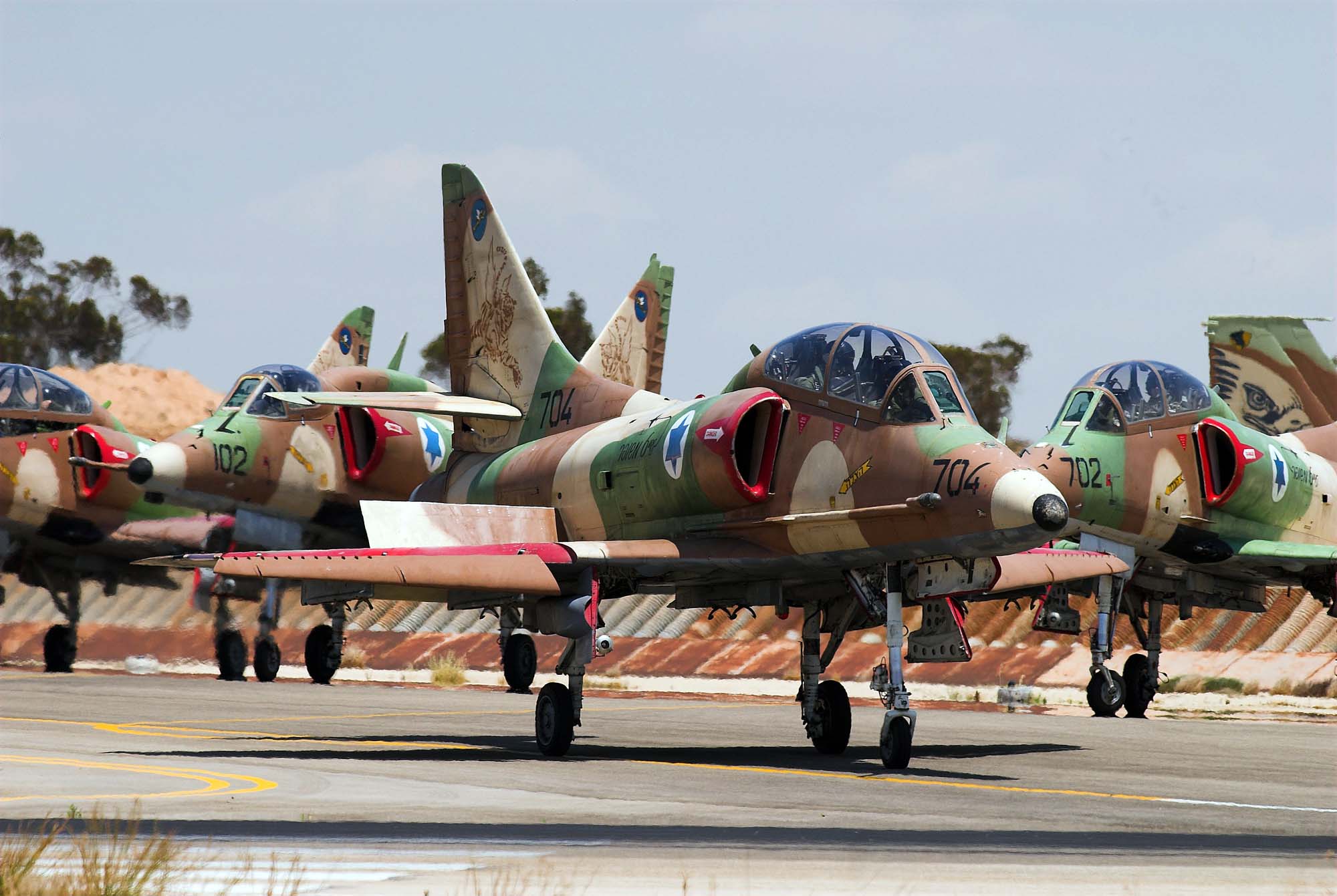
Based at Hatzerim are still in service less than forty specimens of the legendary Douglas A-4 Skyhawk, in the A-4N (single-seater), TA-4H and TA-4J (two-seater) versions.
Framed in the 102 Squadron "The Flying Tigers", the aircraft are used in the task of advanced training. All the specimens currently in line were subjected, starting
from 2004, with a program that includes avionics updates, with the introduction of an HUD (Head Up Display) with built-in GPS navigation, a new payload release system,
and a new cockpit with multi-functional display.
Known in Israel by the "Ayit" (Eagle) nickname and in line now for 45 years (the first two machines were delivered on December 29, 1967), it is expected soon to be
replaced with the Italian Alenia Aermacchi M-346, of which it has been recently signed the contract for 30 aircraft, with deliveries scheduled to begin in 2014.
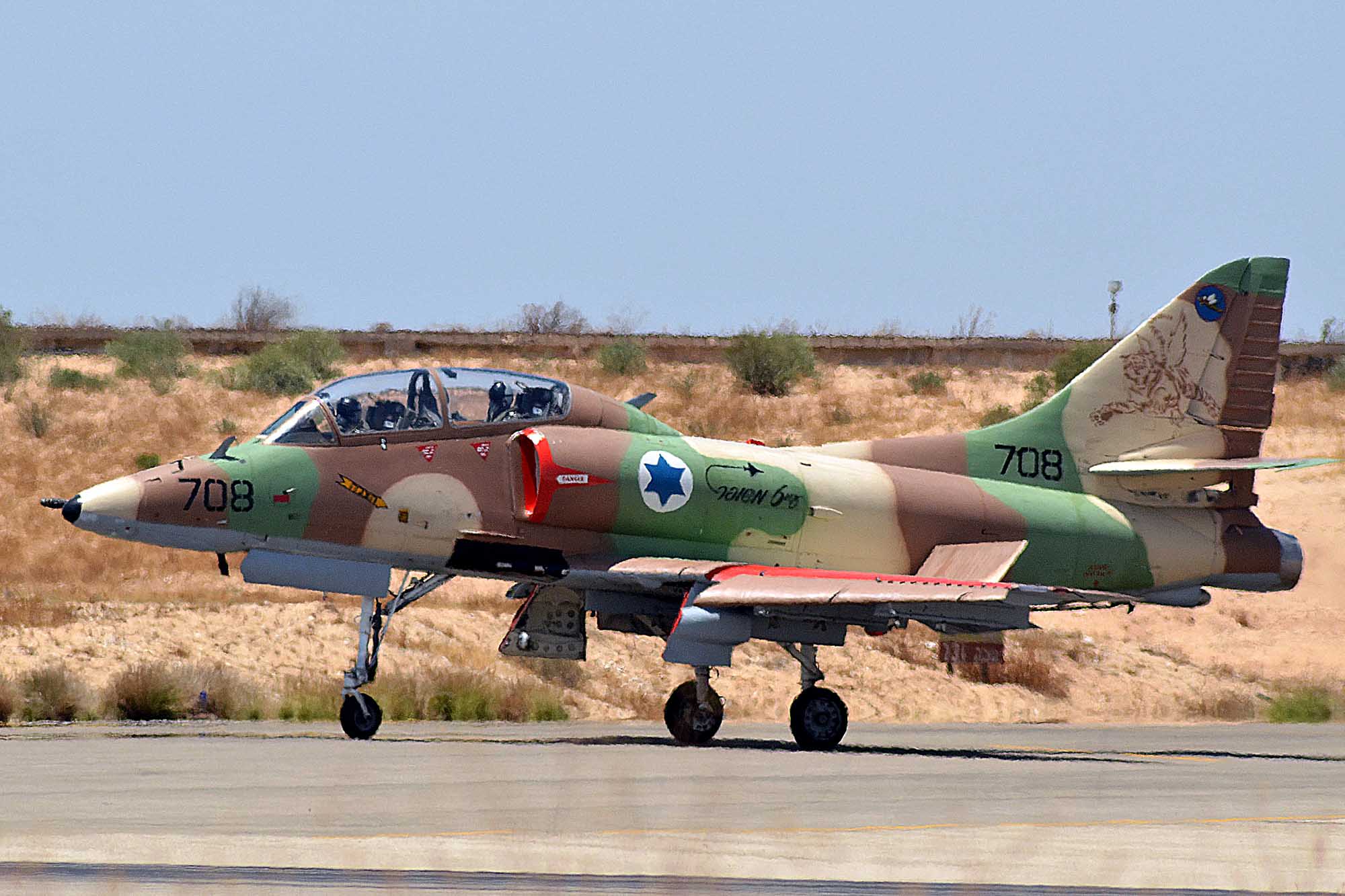
From the point of view of heraldry, the IAF fighter aircraft represent a pleasant diversion from the monotonous landscape of the NATO air forces camo, made up by
invariably gray-finished aircraft. Except for the "Baz", the entire fighter fleet is in fact characterized by unusual and attractive Israeli three tones (sand / brown /
green) camouflage with medium gray lower surfaces. The insignia of nationality are in full and extremely brightly color and, above all large-shadowed and colorful units
markings are painted on the entire tail. This latter feature has the function to facilitate the visual identification of friendly (national) aircraft, either from the
ground or from the air.
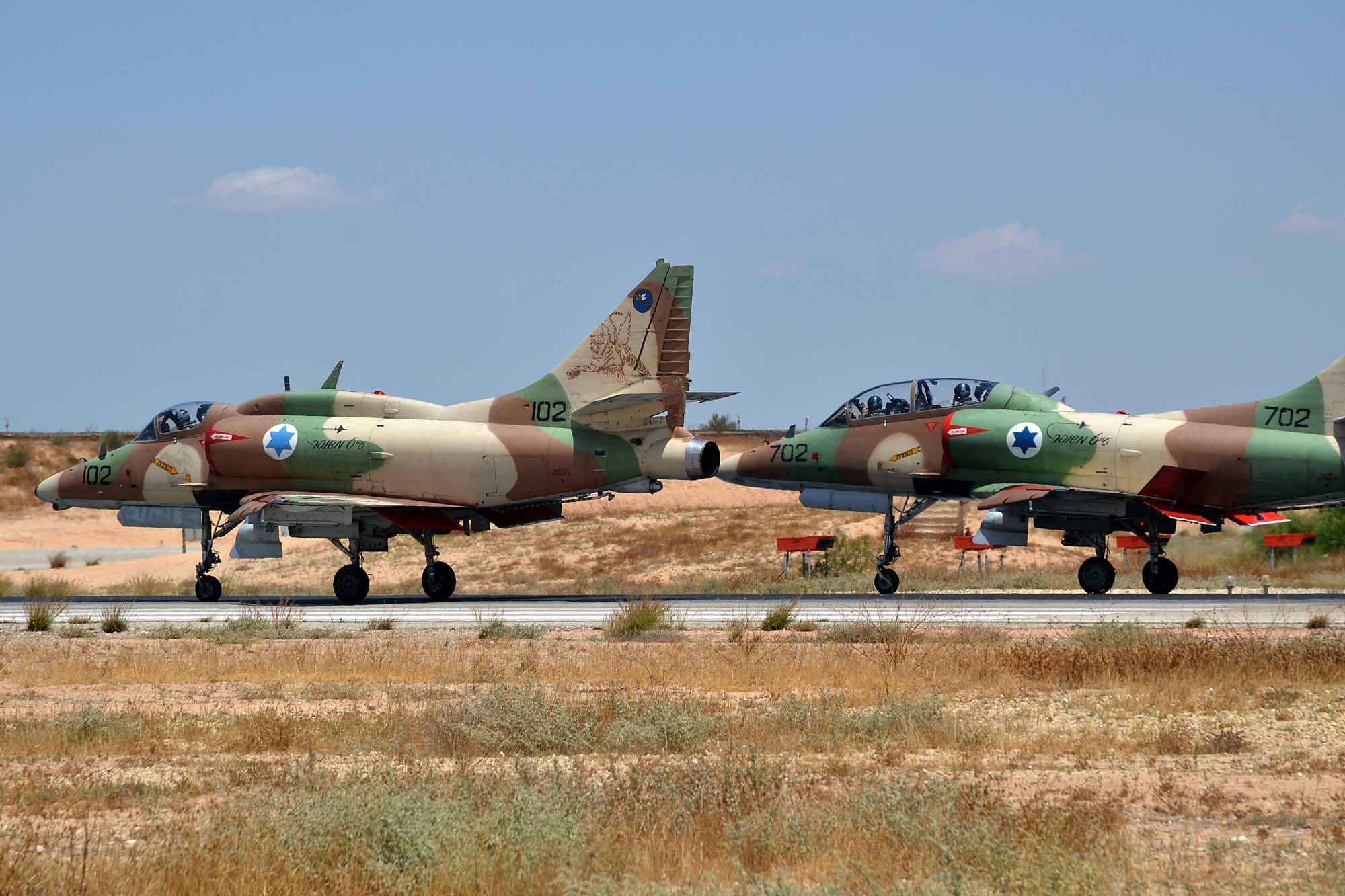
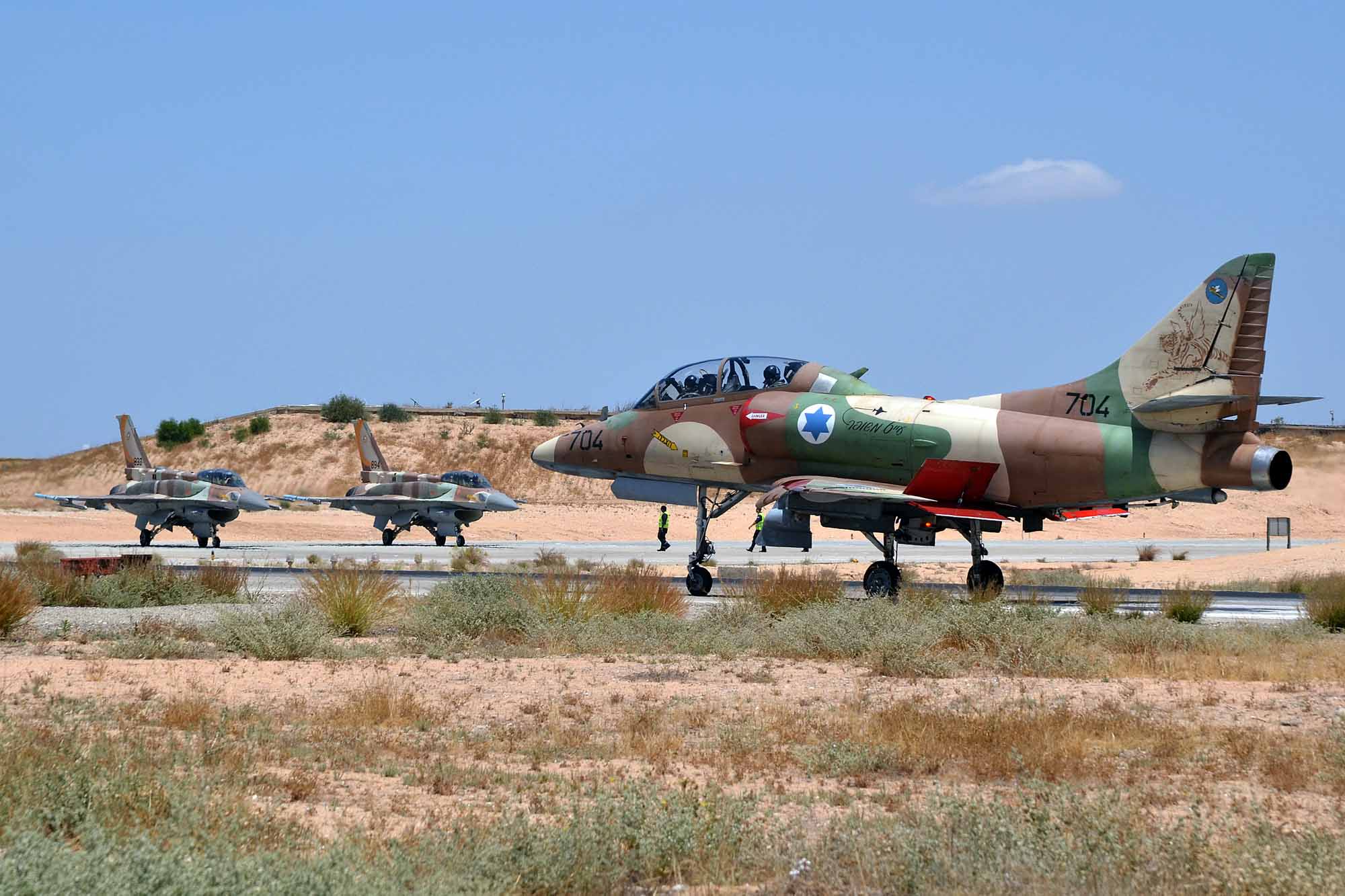
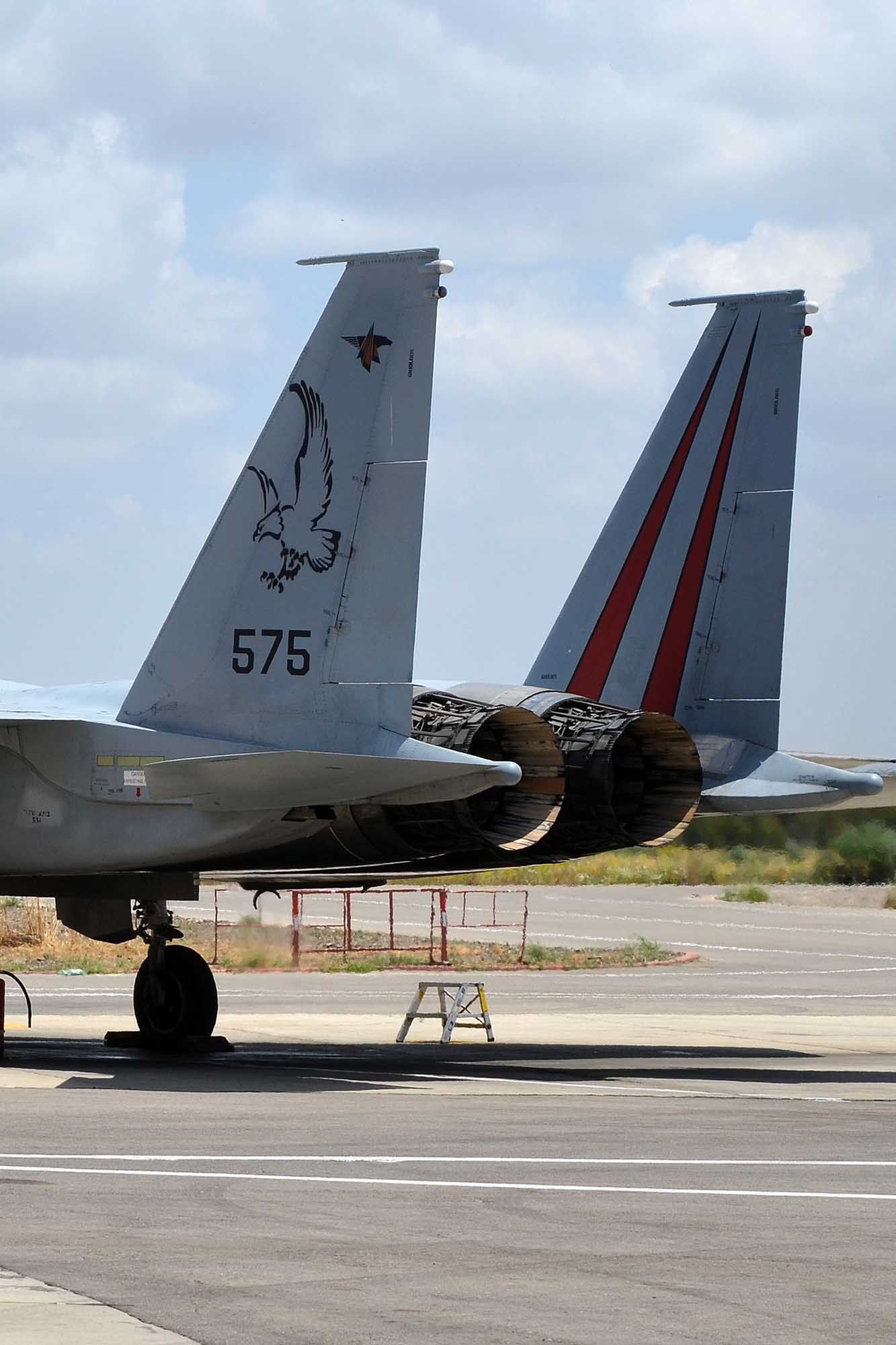
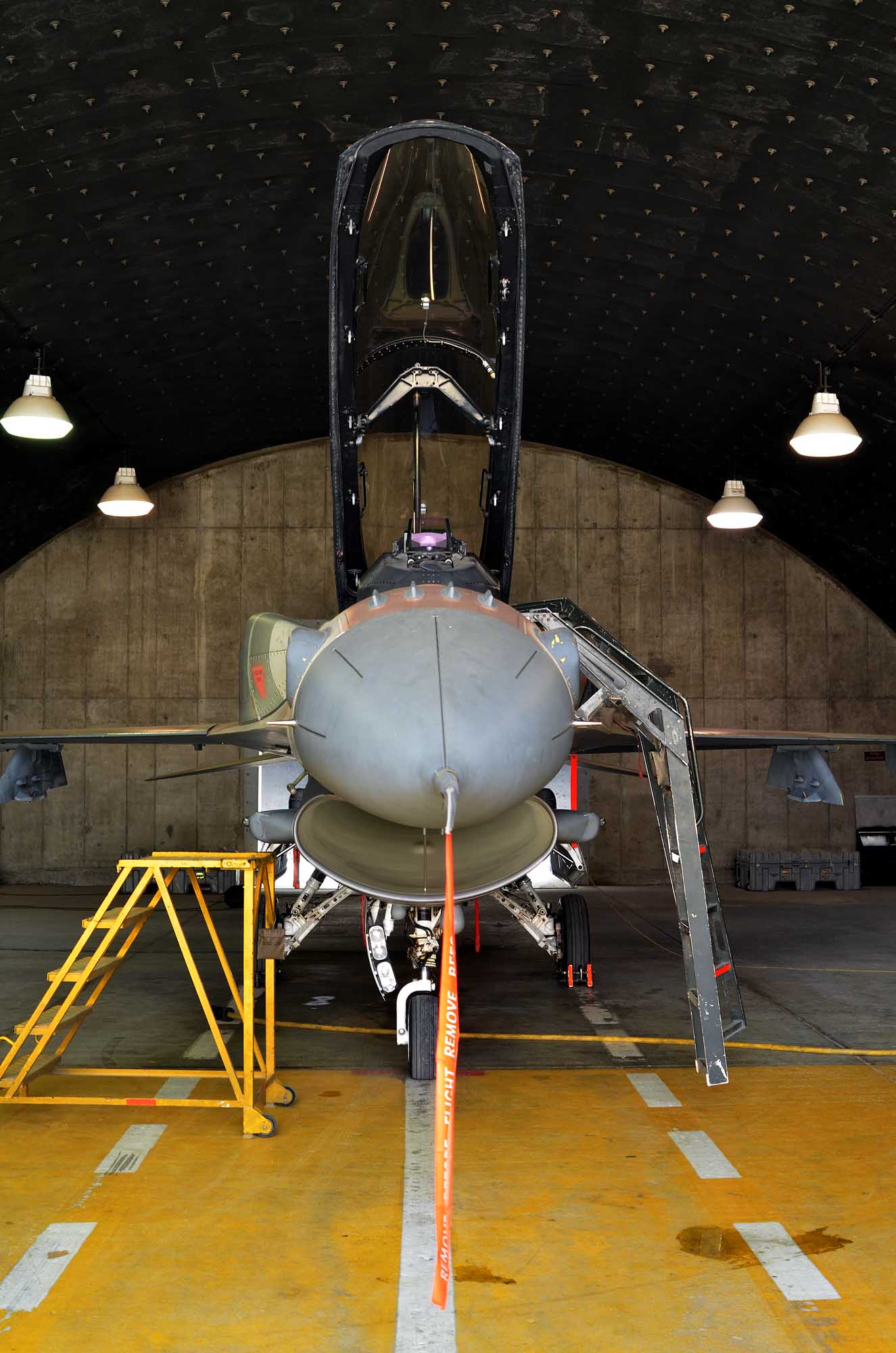
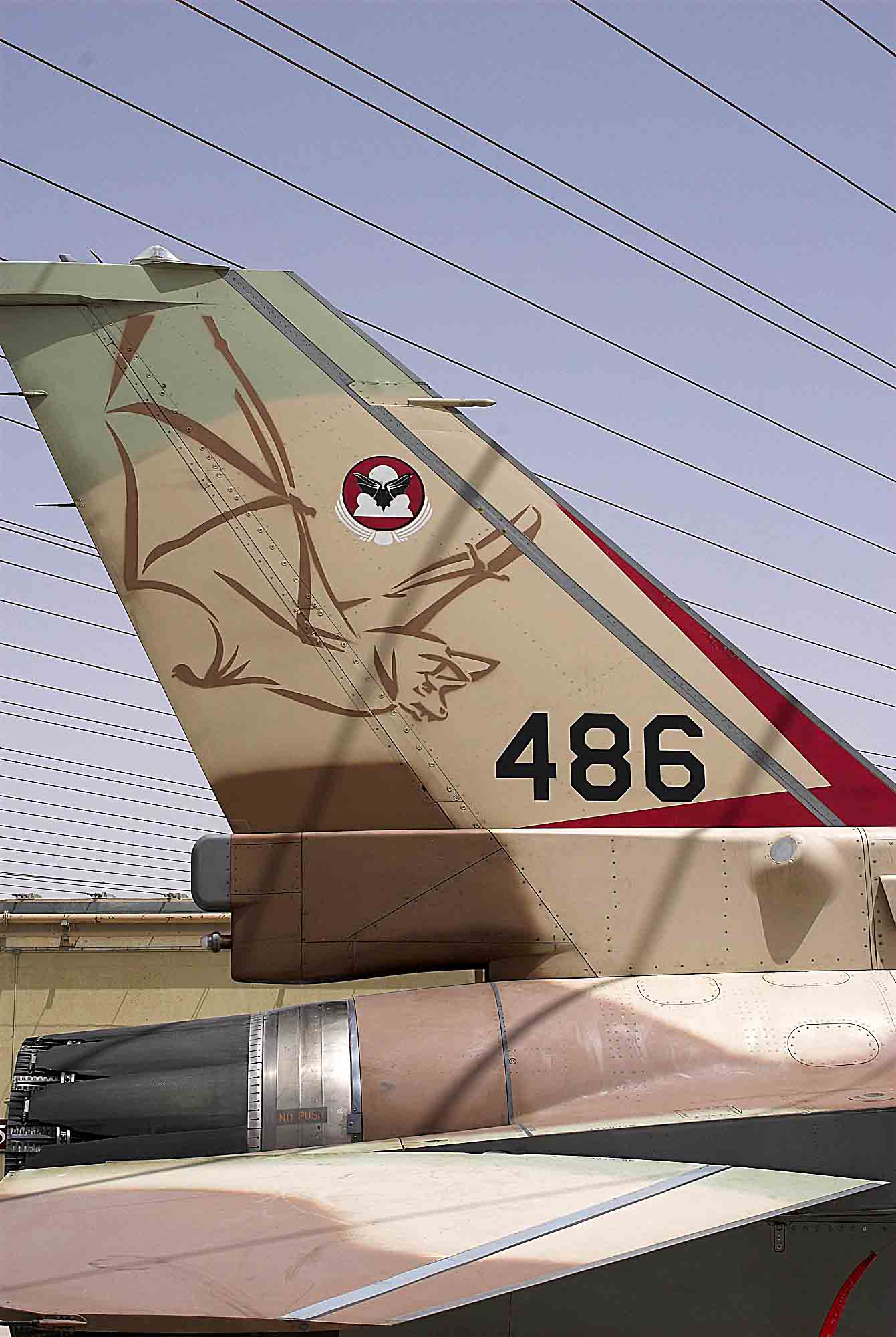
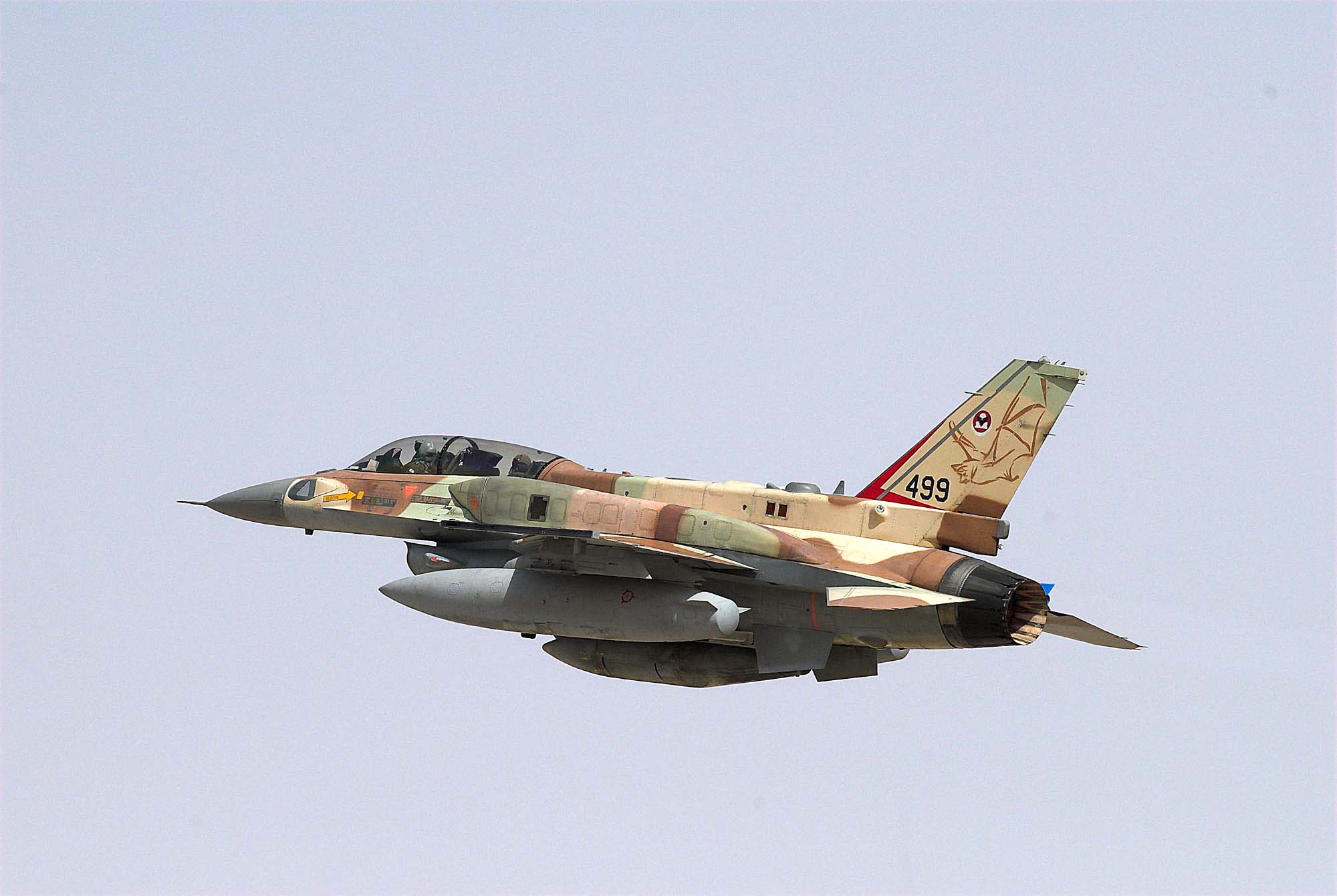
2012© Mauro Finati & Paolo Rollino